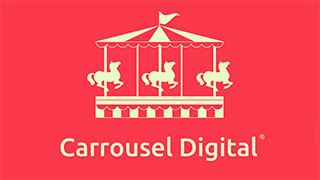In its smart cities paper, researchers from the Department of Industrial Engineering & Innovation Sciences at Eindhoven University of Technology explore how smart city lighting projects can be replicated and upscaled successfully
To address major threats to the sustainability and quality of life in urban settings, many municipalities have started exploring routes toward smarter cities to, for example, lower their energy consumption and carbon footprint. These explorations, in the form of living labs or other pilot projects, often suffer from major problems in scaling up the initial try-outs.
In this study, we identify the mechanisms that facilitate the diffusion of smart city solutions, which are developed with public funds but typically lack dedicated resources to spur the diffusion of these solutions. We introduce the construct of embedded replication potential - the capacity of an original project to be either scaled up locally or replicated elsewhere. Subsequently, empirical findings from a study of smart lighting projects in several municipalities in northwestern Europe serve to develop a checklist-based tool for assessing the embedded replication potential of an initial project and to assess the replication potential of other smart city projects.
New innovative products often require substantial upfront investments by adopters to achieve major gains such as improved energy efficiency or enhanced quality of life. As such investments are often associated with high costs, the decision to allocate resources may involve numerous factors that can hinder the adoption decision.
Using Boundary Objects to Enable Knowledge Sharing
A key challenge in smart city projects is that they inherently involve highly diverse actors, representing different backgrounds and institutional settings. More specifically, people with highly different backgrounds often do not have enough common “language” to effectively engage in conversations about collaboration. In this respect, three types of knowledge boundaries have been identified in innovation processes: syntactic, semantic and pragmatic boundaries.
To overcome these boundaries, all stakeholders involved have to adopt a “broader” perspective. However, many stakeholders may not be able to invest sufficient resources (e.g., time) to become familiar with the worldview of others. As such, innovation scholars have demonstrated that knowledge sharing and collaboration benefit from so-called boundary objects, involving abstract or physical artifacts with the capacity to bridge perceptual and practical differences among diverse actors and thereby promote cooperation. Boundary objects may include models, graphs, visual representations, tools. Using a combination of boundary objects improves the effectiveness and efficiency of knowledge transfer.
Involving residents in decision making
Many municipal staff members appear to focus on obtaining a minimum level of stakeholder acceptance. For instance: “They think there are going to be small steps, but at the end it’s going to be a big change in their personal life so their acceptance is very important” (municipality #F); “If we tell the residents that we are going to lower the lights they will really think something and express their opinions… if we don’t tell anything they wouldn’t even notice. So probably it’s better not to tell too much to the residents” (municipality #H); “We want to learn how to work together with the users and other stakeholders like shop owners; sometimes it is very difficult to communicate with them and there is a conflict of interest” (municipality #C).
Likewise, municipal representatives acknowledged ample opportunities to collaborate with business owners; for instance: “we’ll be talking with them to develop the proposals … Also, how to communicate with all these stakeholders is important” (municipality #D); “I think we can ask about issues from the people themselves because when you have some regional arguments in different parts of the city it’s the people there who best know what’s going on specifically” (municipality #F). However, the resources and capabilities of the municipalities appear to be an important limiting factor, since several municipalities had major difficulties in facilitating the meaningful inclusion of residents. Our earlier argument about use cases serving as boundary objects is also relevant here: “But I think if we have some sort of solutions to show them [referring to the ones developed within the project], they’re able to tell if this fits with their particular situation” (municipality #F). Similarly, another representative from the same municipality talked about an interest-based (as opposed to geographical) clustering of resident involvement targeting, for example, “cyclists to ask them what the problems are and what the situation is, because we’re thinking about how improve the streets themselves, but it might be an additional part of the solution to help them feel safer by giving them a better lighting situation.”
Overall, our data suggest a growing number of municipalities appreciate the potential of an active dialogue with residents as an important driver of adopting smart lighting. Boundary objects serve as knowledge carriers between locations as well as focal points for conversations on adoption. A testament to the efficacy of such boundary objects is that the follower-city representatives became fully engaged in exploring how use cases developed elsewhere could be implemented in their own city.
Including an Intermediary
One key challenge in replicating projects is that some or all implementation roles are fulfilled by different parties. This exchange of partners creates an additional problem around knowledge transfer. In this respect, replication efforts can be reinforced by including an intermediary organisation in the consortium to gather insights from individual projects and disseminates knowledge and network contacts to new initiatives.
Strong leadership
The existence of a strong leader enables members to move toward a shared vision, to align their investments and to develop mutually supportive roles. The leader also has to mobilise all participants around a strong vision of implementing and scaling up the developed solutions. In an ideal situation, this vision is created at an early (pilot) stage. A challenge in replicating smart city innovations is that, once a pilot project nears completion, its momentum tends to slow down. As a result, various participants have little motivation to pursue replication elsewhere, even if the solution appears to be highly appropriate.
Where commercial firms have a market incentive for replication, public organisations may not.
Procuring Standard Solutions
Municipalities tend to prefer standardised products, which are perceived as beneficial for at least two reasons. The first reason is costs. With higher economies of scale, standard products typically outcompete fully customised units, even if the integration of the standard product is customised for a specific municipality. The second reason is the expectation of future compatibility and interoperability, in both replacing these units and adding further functionalities.
Momentum
Once a pilot project nears completion, its momentum tends to slow down; as a result, various participants have little motivation to pursue replication elsewhere, even if the solution appears to be highly appropriate. This problem partially arises from how the principal–agent relationship between the (public) funding body and the consortium is structured. Publicly funded projects typically measure the impact of the innovative solution within the (funded) project duration itself, rather than beyond it, which potentially incentivises consortia to focus on immediate implementation instead of long-term impact. One way to avoid a loss of momentum is to plan for significant efforts in coordinating replication activities in the original project.
Replication Checklist for Smart Lighting Applications
14 checklist items were developed by synthesizing the findings of the research. An initial test demonstrated that the tool serves to assess the design of a (proposed or ongoing) project; it also appears to facilitate discussions about the scope of the project. Moreover, the tool can be deliberately used as a self-assessment instrument when the project owner and its stakeholders evaluate the incorporation of replication-enhancing strategies into the current state of the project. The outcomes of multiple users assessing a single project may not only facilitate discussions about the project’s design but also help monitor the project’s progress at a later stage. In any case, the tool serves to prevent some activities and strategies that would be completely neglected. The tool may have a significant impact in scrutinising consortia-based applications for (publicly funded) projects. Indeed, gaining followers is key to the success of any original application project—from both an energy-saving and an environmental impact point of view. The checklist can be viewed here.
Technology transfer
The construct of embedded replication potential and the tool for measuring it may appeal to public funding agencies as a valuable approach for estimating the impact potential of any sustainability project in an urban context. This approach may work both ways. First, funding agencies can request substantial efforts in embedding replication potential in project proposals, especially those aiming to develop and apply novel technologies in use cases; this would make it easier to transfer the technology to other sites. Second, project managers that seek funding for replication activities need to engage in substantial efforts to identify previous projects and their outcomes, to subsequently transfer (some of) that knowledge to reduce the transaction costs of the replication project envisioned. Either way, the tool developed in this paper may inspire funding agencies and project owners to enhance the replication potential of their funded projects and thus make our cities more sustainable. L
Extracts published from “Enhancing the Replication Potential of Smart Lighting Projects” by Dr. Madis Talmar, Prof. Dr. Georges Romme, Prof. Rianne Valkenburg. Academic Editor: Pierluigi Siano. Co-funded by the Regional Development Fund under the transnational program Interreg North-West Europe, project number NWE647. The APC was funded by the Eindhoven University of Technology.





